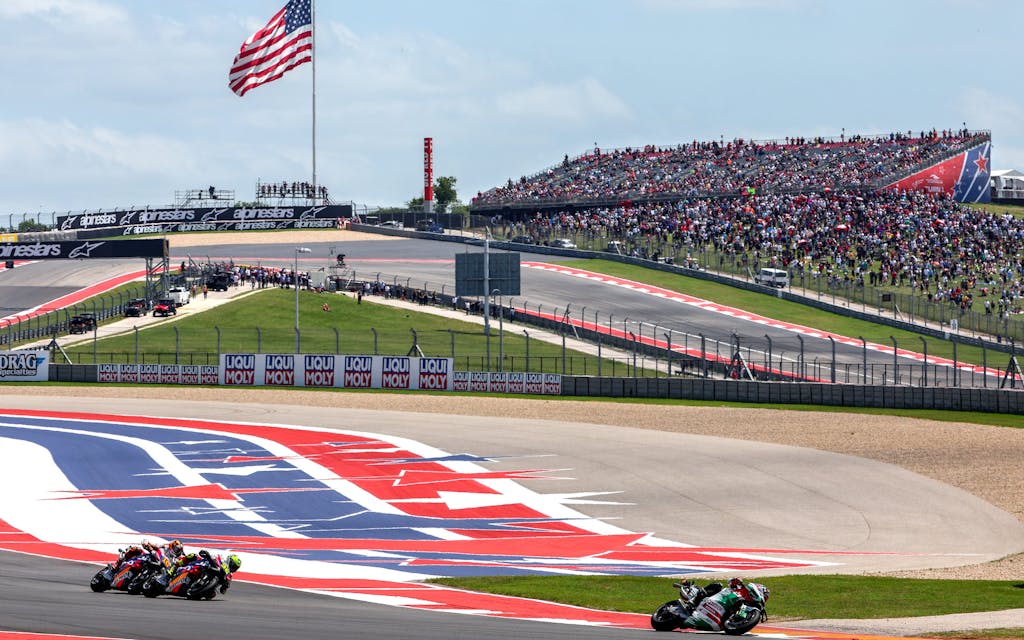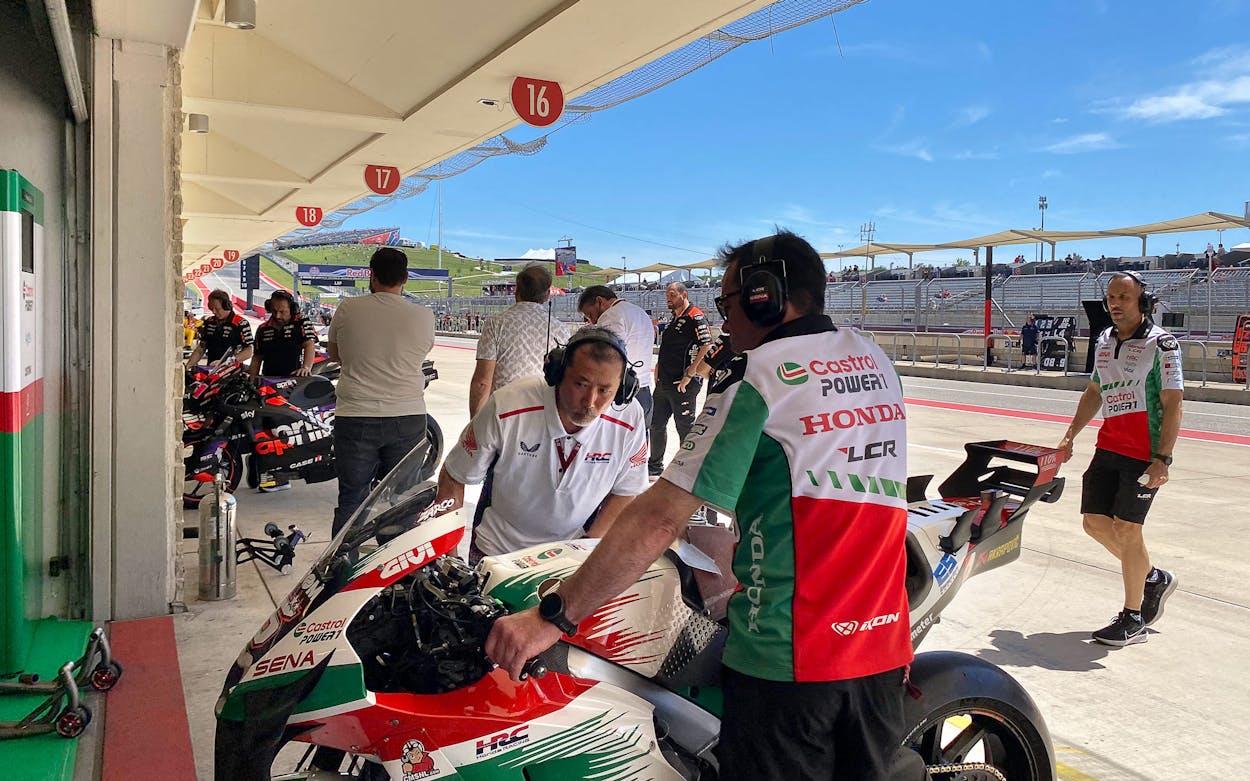It was a sticky, sunny afternoon at the Circuit of the Americas. Thousands of spectators were gathered on Sunday to catch the rush of MotoGP. Who among the best motorcycle road racers in the world would win the Grand Prix of the Americas?
The race was only halfway through when, after seizing the lead with his swift and aggressive riding, Spain’s Marc Márquez slid into the gravel and crashed. Audible gasps swept through the devastated crowd, but there was little time for fans to dwell on the disappointing twist. With nine of twenty laps left, the crown was up for grabs. Fighting his way up from eleventh place, Maverick Viñales, another Spaniard, swerved past Pecco Bagnaia and then Jorge Martin before overtaking Pedro Acosta for first place—all in just two laps.
If these names don’t sound familiar, don’t be surprised. MotoGP hasn’t had a pop culture moment that’s allowed it to break through into the U.S. sports consciousness like Formula 1 racing had with the Netflix series Drive to Survive. But MotoGP still has a dedicated fan base of racing and motorcycle enthusiasts. “People come to see the factory bikes because you can’t see them anywhere else,” says Yuji Kikuchi, a Dallas resident who works in MotoGP as a mechanic for the Honda LCR team.
I visited Kikuchi in the paddock a couple of days before the grand prix. It was the second free practice before the race, and riders were roaring around the track on qualifying runs that would determine their starting positions for Sunday’s main event. Inside the garage, the engineers worked with a level of coordination and efficiency that rivaled that of the machines on the course. They moved with purpose, removing parts of bikes, starting engines, replacing tires, and even vacuuming the green carpet, without much conversation. The smell of burnt rubber in the air was almost sweet.
MotoGP isn’t just man versus man—it’s also man versus machine. The faster a rider goes, the more difficult it is to control the bike and the more problems the rider encounters. The bikes are multimillion-dollar experimental prototypes, and engineers like Kikuchi put them through near-constant cycles of iteration to fine-tune the mechanics. To craft the best bike possible, engineers analyze heaps of data from the bikes’ internal computers—everything from engine performance to bike position to the angle at which riders lean into each turn—and make adjustments, factoring in the rider’s sense for how a bike is running. With only two practice days to test the bikes before a race, mechanics must work quickly to optimize their teams’ motorcycles and give their riders the best possible chance to finish first.

Kikuchi has been working in MotoGP for almost twenty years. His preparation begins only two days before each grand prix. Motorcycles are shipped from country to country, hopefully arriving by the Wednesday of race weekend. After he and his crew unpack the Honda LCR team’s two bikes, they get started with their adjustments for that particular track. As the gearbox specialist, Kikuchi is the team’s only engineer permitted to work on a bike’s transmission. Even Kikuchi’s teammates have limited access to the specifics of his work on this crucial part of the machine. When he needs to service or adjust the gearbox, he removes it from the bike and takes it to a special transmission room, where his work on the part remains confidential. “I still feel very privileged I get to touch these bikes,” he says.
Being a mechanic for MotoGP requires extensive travel—with 22 races per season, Kikuchi is on the road for almost half the year. “We’re kind of like the circus people,” he says. “Traveling nomads. We come to town, put on the show, and then we leave.” Still, Kikuchi says his passion for motorcycle racing allows him to endure the lifestyle: “You have to like it. Because if you hate this job, you’ll really hate it, because you’re never home and you’re always working with people on your team. You have to be able to get along and accept things on tougher days. When we’re all together for three or four or five races in a row, some can get on your nerves. To accept that and get along, it’s not so easy sometimes.”
Though Kikuchi and the Honda LCR team won last year’s Grand Prix of the Americas, in Austin, they weren’t so lucky this time. Six laps into Sunday’s race, LCR rider Johann Zarco entered the pit because he felt a bike issue and wound up withdrawing from the competition. “I think we all feel a bit of uncertainty of how we are going to be doing in the next race,” Kikuchi told me after the event. “But, our job is to keep working on it. And every time we go out there, we strive to do a little bit better than last time.”
The highlight of Sunday’s race was a battle between Martin and another rider, Enea Bastianini, for third place. On the penultimate lap, Bastianini broke through and overtook Martin to earn a spot on the podium alongside winner Viñales and second-place finisher Acosta. It’s hard to believe so much can happen in just 45 minutes, but as Kikuchi points out, that’s racing.






